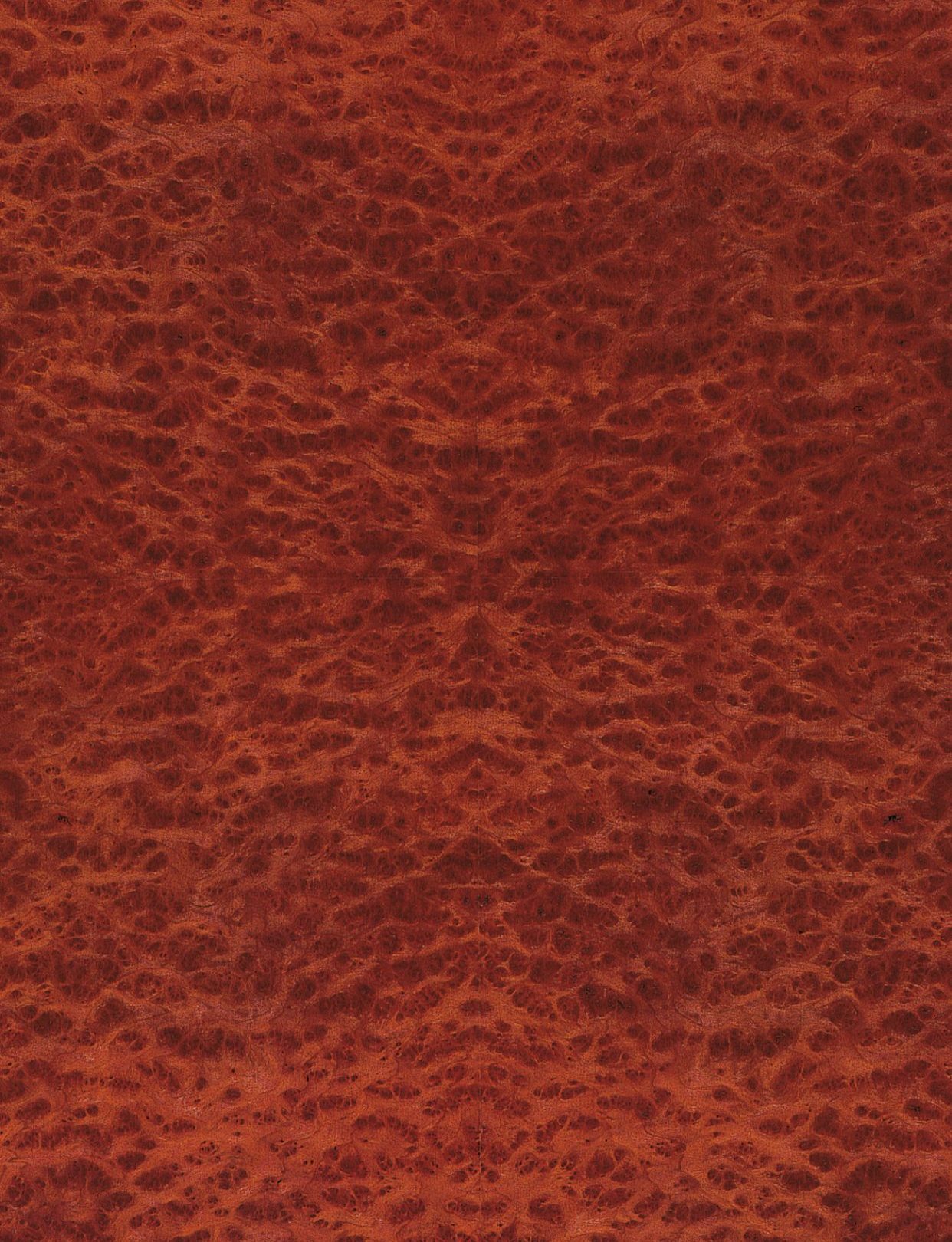
Vavona Burl
Sequoia sempervirens

Trade Names
Vavona Burl, Redwood Burl
Origin
North America
Range
The coastal region of Northern California and Southern Oregon. Seldom occurs more than 30 miles away from the Paci c or at altitudes over 3,000 feet. The burl is the root of the Mammothtree and is often gigantic in size. The burls have to be dug out which often involves a great deal of work.
Uses
High quality architectural woodwork, furniture production possible but only produced in Southern Europe so far.
Properties
The Vavona Burl is deep dark red in color and in principle one can differentiate between two types: 1. Lace form: the actually burly wood. 2. Birdseye form: fine, darkly pronounced dots are scattered over the surface similar to the Birdseye Maple. The veneers are relatively fragile.
Machining
Vavona can only be worked with very sharp tools with the greatest of care and due consideration to the burl formation. However, produced surfaces are satisfactory.
Seasoning
The wood must be dried extremely slowly to avoid checking in the burl surface. The more carefully the wood is dried the better the result.
Finishing
A polished surface is recommended to highlight the burly texture but a light gloss should be produced at least.
Jointing
Gluing of Vavona, mainly as veneer, can be carried out satisfactorily. Screw joints must be pre-drilled.

